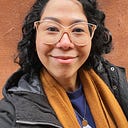“Time Capsule” — Closing the Bootcamp in Style 🚀
Last Friday, February 12th I graduated the Technigo bootcamp! Woohoo!~
A day full of amazing energy, a day to feel proud and celebrate!
Now after I’ve enjoyed some anticipated downtime, here comes a little reflection about what I did as my graduation project.
More than the technical aspect of it, I want to focus on the “soft-skills” side, and how good team work, planning and communication played a key role on making this a smooth experience — habits that I am sure will come in handy in my future as a developer.
I worked together with my classmate Sofia on this final project. Sofia has experience working as a neonatal ICU nurse where she used to write daily log books for premature babies who did not end up immediately under their parents’ care. A lot can happen during this time of separation, so memory making and data recording is crucial.
Originally these logbooks were maintained in pen and paper format, so the idea was to create a digital version of them, where this important data can be stored more safely and carried on by parents.
Planning Phase — Pitching the Idea
We spent at least two afternoons working on our pitch. At the end it included, not only the general idea brief, but also concrete Frontend MVP (minimum viable product), design inspiration and Backend structure.
This time we chose Jamboard and Notion as our planning tools.
We put together a Jamboard which included some sketches of how our Frontend would look like, which different pages it would show, starting from the Sign Up/ Log In flow, until the user reaches the main content in the Dashboard. We had already decided on the different forms the user would have to fill in within our app and the different sections our Dashboard would include.
Having that clear idea of the Frontend, made it much easier to get started on our Backend. We knew the type of API we needed to build and which endpoints.
We also took some time to think about the different models we would need in our database and how we were to connect them.
I can confirm that having taking the time to plan everything in such a detailed manner, made a big difference and allowed us to start coding since day 1 (we had 4 weeks to complete this project).
Hopefully this is a practice that I’ll be able to keep up in the future, when working on bigger scale projects.
Constant and Open Communication
Once the plan was in place and we got the go to get started, it was crucial to stay in touch as much as possible.
We worked with weekly planning: we created a new Notion page for each week where we listed our tasks and goals for the week, and even included stretch goals in case we ended up with some extra time (which luckily we did, so we could push ourselves and implement some cool features we were curious about).
Each person was assigned a couple of the goals, but we made sure to always come together as soon as a new feature was completed. This way the other person would learn how it was achieved, ensuring we both know what’s happening throughout the whole project.
The most complex parts we decided to do in pair-programming, which included some of the Backend, and the two main user forms in the Frontend. After that was completed, it became clearer how we could divide tasks.
“Team work makes the dream work…”
Working in a pair made it so we could be much more ambitious with this project. I know I would have not been able to implement all the features we did if I was working by myself.
It was amazing having met Sofia during this bootcamp and discovering how similarly we work.
Finding this fellow programmer that I can discuss ideas with, come up with solutions and brainstorm was super fun, and I’m glad we had the opportunity of working on this big project together.
“Time Capsule” was a great app to work on and one that I’ll keep close to my heart for a long time. It helped us apply all this new knowledge, solidify concepts and show what we can do as developers.
You can find a live version of it here: https://time-capsule-final.netlify.app/
And for more technical info on how it was built, please visit our GitHub repository: https://github.com/VanessaSue27/final-project-frontend
